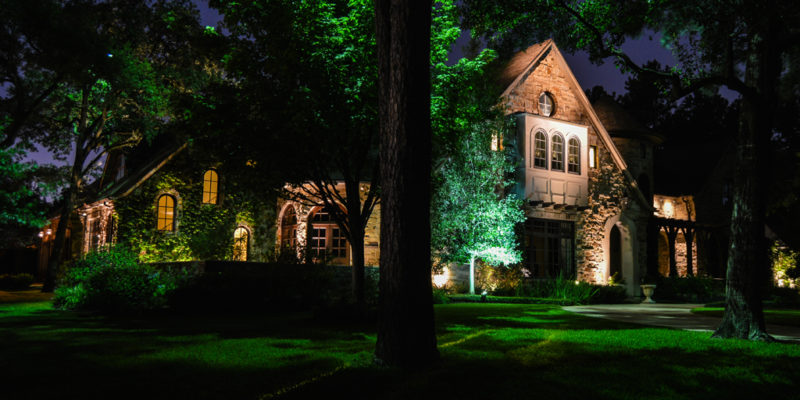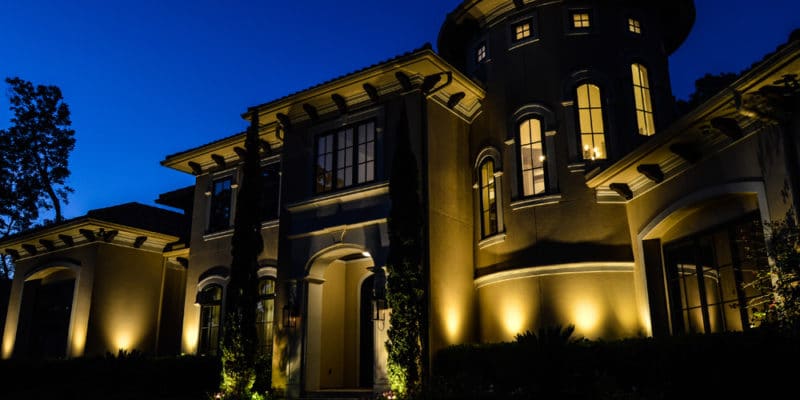How To Choose The Right Color Temperature For LED Landscaping Lights
Are you stuck trying to find the best color temperature to illuminate your landscape? If so, then the information contained in the following guide may help you reach a decision. At the very least, it will help you understand the thought process that the professionals use when choosing different LED colors and temperatures.
Before you can choose the right temperature you need to understand what it is and how it is measured. When a designer talks about a particular color temperature they are referencing a characteristic of a light that affects how that light feels. The measurement is always expressed as a temperature using the Kelvin unit. A temperature that is expressed as degrees Kelvin will have the capital letter “K” following the temperature. An example would be 2,400K, which is the color temperature of standard incandescent lamps.
But what exactly does it mean when a package states that a light has a color temperature of 3,000K? The temperature lets you know how warm or cool the light’s expression is. What confuses many people is that higher temperatures are actually considered cooler colors. Remember, a standard incandescent lamp has a color temperature of 2,400K. A candle generally has a color temperature around 1,700K. This means the candle is a warmer color.
Light manufacturers will often label color temperature on their packaging. They may sometimes use labels instead of numbers. For example, the light might be defined as daylight or soft white. These are terms that refer to the color temperature. It’s much easier to learn what the different temperatures are and then find lights that have the actual color temperature listed on the package.
Interested in learning some of the basic color temperatures? Here are a few numbers that you should remember.
1700K – This is the color temperature of a lit candle.
2200K – This is the lowest point on the white light scale. Below this temperature is known as yellow light.
3500K – From this point forward, the color temperatures are considered “cool”.
4000K – This is a very cool natural light.
5000K – Around this point is considered daylight. Temperatures around 5000K are natural and very cool.
6500K – Starting at this temperature you begin moving into the blue light spectrum.
How To Choose The Best Color Temperature For Outdoor Light
It’s impossible to label any single color temperature as best for all occasions. There are a number of factors that will influence your decision. Primarily, it comes down to preference. You may even need to try several different temperatures to find the one that you like the most. However, there are two important considerations that you should keep in mind when choosing outdoor lighting.
The first consideration to remember is that less lighting is required outdoors than indoors. After all, there are already multiple sources of natural light outdoors as well as possible light pollution from neighbors, street lamps, or nearby buildings. What this means is that you can take a more subtle approach to ambient lighting.
The second consideration is that if you have an environment with low ambient lighting, then it’s generally better to stick with warmer colors. Warmer colors produce a more comfortable experience when there is very little ambient light. This is partially because warmer colors cause less strain on the eye.
If you combine these two facts, then you can draw the conclusion that creating settings with low-ambient lighting and warm colors is ideal. Think about the pleasant attraction of a campfire or the relaxing nature of candles. This is what many people try to reproduce with their landscape lighting.
The Ideal Range
It’s hard to go wrong if you stick with color temperatures between the range of 2700K and 300K. These lights are somewhat natural, calming, and warm. 2700K resembles the light produced by halogen, which is something that most of us are familiar with seeing.
You can increase the temperature to 3000K for a slightly cooler approach to lighting. 3000K is a very popular choice in situations where 2700K is just too warm of a color. Consider trying both options to see which best suits your property.
Working With Cool Colors
Warm colors aren’t necessarily mandatory. For example, there are some plants or materials that would look much better under a cooler light. A blue spruce would come to life and “pop” when situated beneath a 5000K lamp. A cactus plant would do the same if a green or silver filter was placed on the light.
Working with cool colors is a fun way to experiment and express your personal style. Remember that there is no single “best” color temperature. It’s all situational and depends on the environment. But by remember the pointers mentioned above you can understand why professionals tend to work with specific color temperatures.
If you would like to discover more tips and tricks from Robert Huff Illuminations; visit our blog. Call or contact us today for more information!


